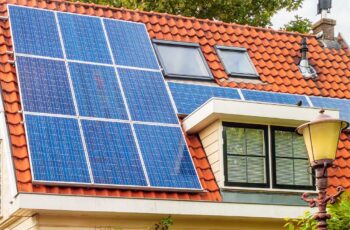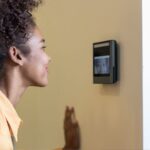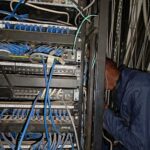Installing solar power for CCTV cameras
Installing solar power for CCTV cameras is a practical and sustainable solution, especially in locations where access to grid power may be limited or unreliable. Here’s a general approach to how you could go about it:
Steps to Install Solar Power for CCTV Cameras:
- Assess Power Requirements:
- Calculate the power consumption of your CCTV cameras and any associated equipment (like DVRs or network equipment). This will help determine the size of the solar power system needed.
- Select Solar Panels:
- Choose solar panels based on your power requirements and available space. Monocrystalline panels are efficient but more expensive, while polycrystalline panels are more affordable but slightly less efficient.
- Choose a Battery System:
- Select batteries to store excess energy generated by the solar panels for use during periods of low sunlight or nighttime operation. Deep-cycle batteries are typically used for solar installations due to their ability to handle frequent charging and discharging.
- Select Charge Controller:
- Install a charge controller to regulate the voltage and current from the solar panels to the batteries. This prevents overcharging and ensures the batteries remain in good condition.
- Install an Inverter (if needed):
- Depending on your CCTV system’s power requirements, you may need an inverter to convert the DC power from the batteries into AC power that your CCTV cameras can use. Some CCTV systems operate on DC directly, so check your system’s specifications.
- Mounting the Solar Panels:
- Place the solar panels in a location where they will receive maximum sunlight throughout the day. Ensure they are securely mounted and angled correctly for optimal solar exposure.
- Connect Components:
- Wire the solar panels, batteries, charge controller, and any inverters according to the manufacturer’s instructions and local electrical codes. Ensure all connections are secure and insulated.
- Testing and Maintenance:
- Test the system to ensure everything is functioning correctly. Regularly inspect the solar panels for dirt or debris that could affect their efficiency, and monitor battery levels to ensure they are adequately charged.
- Consider Backup Power:
- Depending on your security requirements, consider a backup power source (like a generator) for extended periods of low sunlight or in case of system failures.
- Compliance and Safety:
- Ensure your installation complies with local regulations and safety standards. Consider consulting with a professional installer or electrician if you are unsure about any aspect of the installation process.
By following these steps, you can effectively set up a solar power system to reliably operate CCTV cameras, providing continuous surveillance even in remote or off-grid locations.










